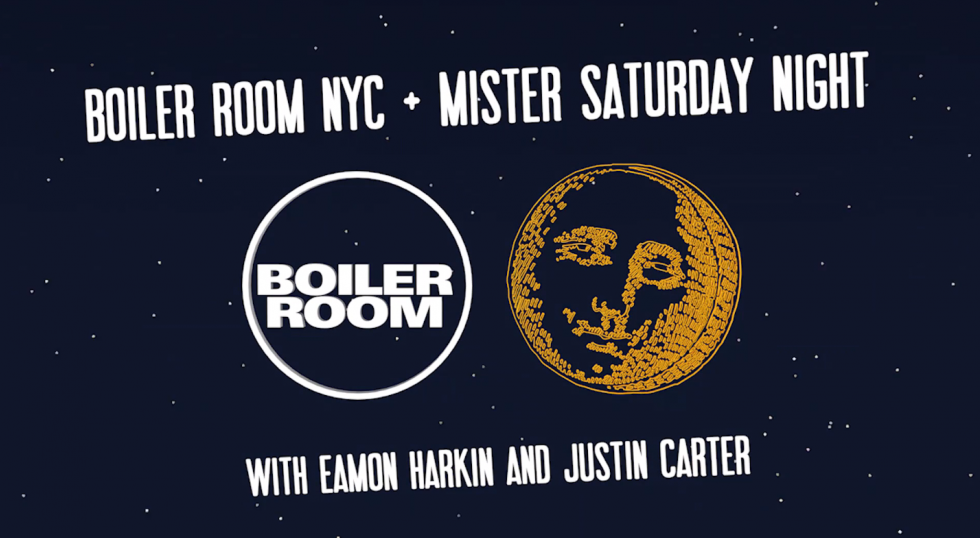Eamon Harkin and Justin Carter are two of contemporary New York City’s shining figureheads – though they’d never admit it. The fast rise and enduring prominence of Mister Saturday Night (both the party and the label) is in no small part down to an unwavering dedication to care; their good nature feeds into every facet. From early days lugging backbreaking systems into desolate lofts, to providing hearty food from local small businesses in the present, this right-minded quality control is tantamount. They never lose sight of the tight-knit community from which Mister Saturday Night sprung, even as they export their goodtime vibes further and further afield. [Incidentally, much of the refinement of this particular piece in recent days has been conducted from various hotels/airports in LA and Perth].
Parties that begin with the strains of Big Star and climax with riotous Rufus edits are never not going to be fun, but their true USP is a welcoming ‘back to mine’ ethos that pervades at both the namesake night and its sister outing, Mister Sunday. They are seemingly everybody’s mates; little wonder they reached for “All My Friends” as a valedictory send off in 2013 to Gowanus Grove, their original outdoor summer spot.
Mister Sunday has gone from strength to strength since, but this forced relocation is notable. Although neither are New York natives, the duo are acutely aware of the implications that come from operating within such a rapidly-shifting metropolis. Which, alongside all the rest, made Eamon and Justin perfect candidates in our eyes to lead a new Boiler Room venture.
The first specially-commissioned episode focuses on NYC’s storied house dancing culture. It was shot during a sticky August evening at PMT Dance Studio – a shelter for those without a Shelter. You get an hour DJ set from Eamon and Justin, some jawdropping routines and a rich narrative woven into the footage via audio interviews conducted by the guys. The broadcast airs on Thursday 29th, but we thought it only right to afford some extra insight and context into the partnership, and the serious obstacles New York’s club culture has faced in recent years.
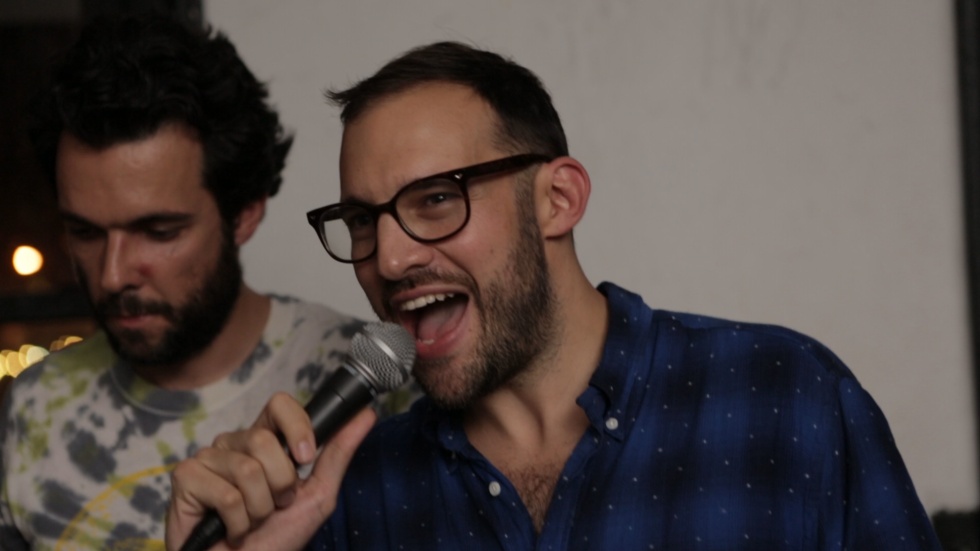
“In order for dancers to do their thing, you need space.”
JUSTIN CARTER: The initial idea stemmed from you guys at Boiler Room approaching us about doing a regular TV-type show. We were instantly into it, but not to just have us standing in front of the turntables. That’s part of the ethos of the party: not putting ourselves as the focal point. It’s much more about the people that are there. We preferred it to be something like Soul Train.
EAMON HARKIN: Something that’s more keeping with what we’re about, but also introduces people to an element of history around dance music, now that dance music’s getting older. One of the other reasons for doing a show in this way is that so many younger people’s only experience when going out is standing looking in one direction at a DJ. I guess they dance with each other, but they’re still standing staring in one direction. Like when I first started going to parties, it didn’t work that way. I don’t know what happened, but everyone just turned. Personally, I don’t understand the fascination with watching a DJ.
That’s our fault, sorry.
JC: [Laughing] We were chewing it over, like: “let’s make it about dancers – that’s what’s really interesting to look at anyway.” The idea to do it specifically at the PMT Dance Studios with The Lab came from our friend Kevin Jones, a dancer who is ever-present at our parties. It’s funny because neither one of us are experts in house dance culture at all. He brought us into this world, so we were being exposed to it in real time. Oh and, side note: His overdub is about dancing to jazz and talking about jacking; it occurs pretty early on.
EH: The little vocal snippets that you’ll hear throughout the show are interviews we did before filming. We were learning on the spot.
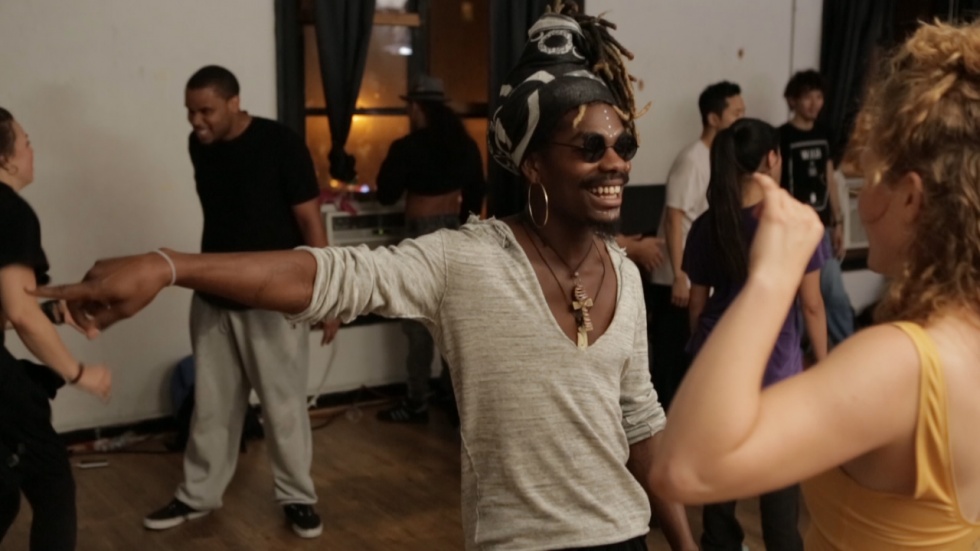
When did your first exposure to house dancing take place?
JC: I was exposed to house dancing at the early parties that I went to in New York at Vinyl; around 1999 or 2000, something like that. I went to Body & Soul a lot, and on Saturdays was a night Timmy Regisford did called The Shelter. Whenever I would get physically tired after dancing for three or four hours straight, I would go and stand up on a stage on the corner where there would be a circle of a hundred house dancers who would all just take turns going into the middle. That was just their practice session, but for me it was just hugely entertaining; I didn’t know that was house dance, though. I didn’t really understand that I was stepping into this longstanding culture musically, and I certainly didn’t know how to pursue it as some kid fresh in the city from North Carolina.
Through the years I’ve talked to people who come out to our party and find out a little here and there. We’re also friendly with DJ Qu who is a house dancer, so that’s helped as well. But I only truly connected the dots at the Boiler Room shoot, having spoken to these dancers in person.
EH: When I was living in London, I didn’t see it, so until I moved to New York, effectively none.
JC: And when you moved here [in 2003], there weren’t really places where that could happen.
EH: The first party I did by myself was at Sapphire Lounge, and that place, we found out in our interviews, has a history of house dancers. The party I was doing wasn’t house music but, looking back on it, we used to get random dancers that would just come through, wouldn’t buy a drink but would just dance. To me, it was interesting but I didn’t full understand it or where they were coming from.
JC: In order for dancers to do their thing, you need space. Even at Mister Sunday now, we have a lot of space but sometimes we find that people who are more into really expressive movement will take off the dancefloor and head behind us, up on this little walkway.
As you’re not a specifically house dancing event, you may have a situation where a very expressive dancer is consciously aware of not pirouetting and bumping into people. If you can’t fully let your inhibitions go, maybe you subconsciously feel slightly hemmed in as a result?
JC: Right. Although it’s funny because we do have this crew of dancers that do show up on the regular – it’s not just the collection that would come to Shelter, for instance.
Are they as full-bodied as The Lab’s kind of dancers?
JC: Some of them are. Kevin comes to the party literally every Sunday it runs, and that’s how we learned about The Lab.
Being totally free to move my body is how I relate to music, and that’s not limited to when I’m in the DJ booth. I’ll be walking down the street listening to a record, really into it [animatedly swings arms]. That’s just what happens. In some ways I have fantasies about going to The Lab and learning how to do all this stuff myself and putting that energy into some kind of concentrated form.
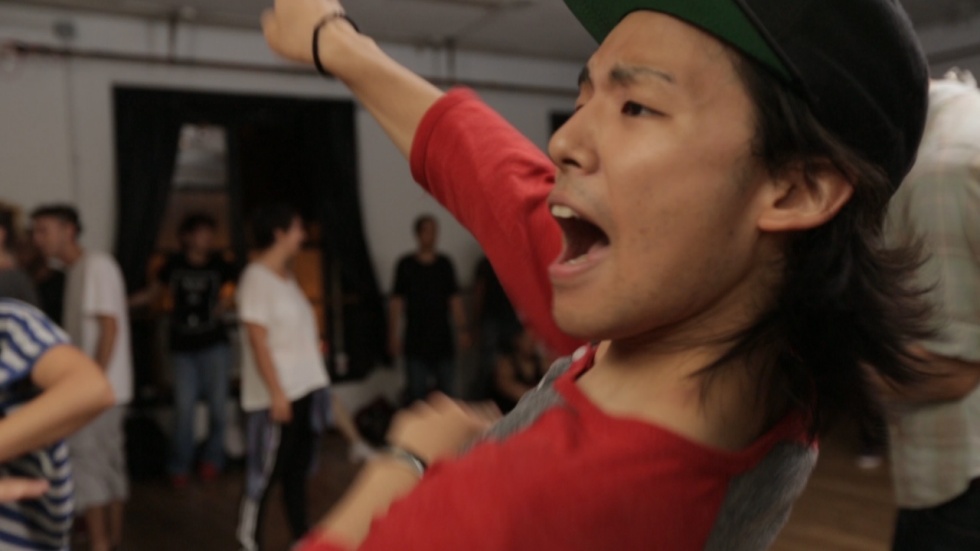
Do you reckon there’s a difference in the dynamic between a DJ and a house dancing crowd, in terms of mixing or track selection? Is it more about providing a conducive cushion for their dancing without having to go through peaks and troughs?
JC: I think it’s really interesting, and we haven’t really talked about this between ourselves, but I was watching the draft reel back, realising that my normal way of playing – certain things I do in the mix – was sometimes throwing the dancers for a loop. I was talking to Cricket [one of the dancers who runs The Lab], and he was excited: “man, these kids in here – they’ll only dance to stuff that they know. Playing “Windowlicker”, that was awesome!” I think if we were to play for this crowd again, I’d probably play differently.
EH: I deliberately brought all house records, I thought that was what they were gonna want. A relationship does develop there, and it’s one of familiarity like you say. There are a few moments where the energy levels change – not necessarily in a bad way, but they’re like working it out.
JC: Yeah. Always, by the second half of the song, they’ve picked it up and figured out what to do with it. But you can definitely see a transition happen and it’ll be like, “Oh. Okay now we’re gonna do this thing instead.”
What you’re seeing when you’re watching this Boiler Room show is us coming into this world that we know tangentially. It was a new thing for you guys; new for us; and new for The Lab too. Typically this class starts at 8.30pm, and we couldn’t get in to set up beforehand, until the preceding class was over. The dancers were hanging out for an hour before there was any music at all, then we played for an hour and then the cameras started rolling.
EH: It was quite a complicated shoot, with a lot of roaming cameras. I mean, we we playing for them as a warm-up and they were dancing really hard. And there were a lot of them. We were almost begging – “save your best!” They nailed it though.
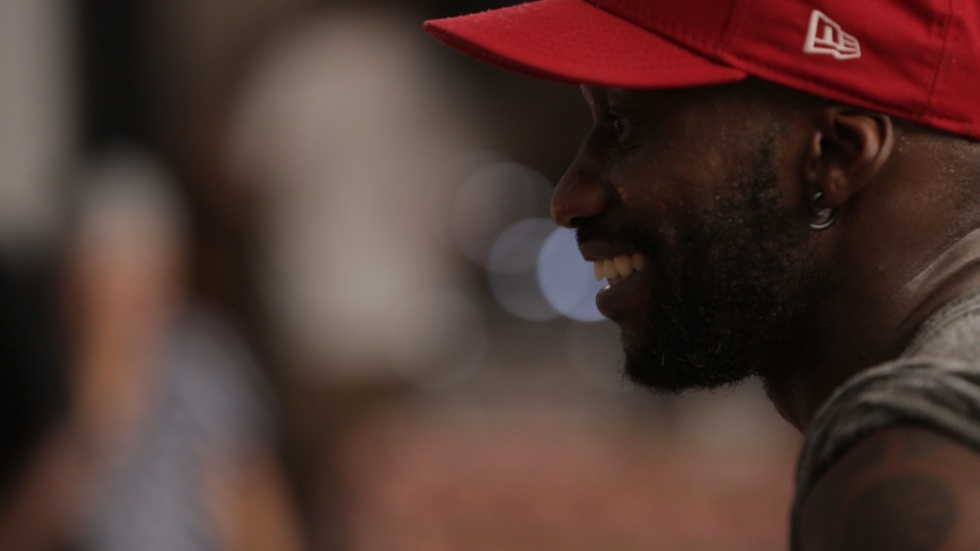
• • •
Eriko Tsubosaka and James “Cricket” Colter are two of The Lab’s spearhead figures, although interestingly neither are New York natives – much the same as Justin and Eamon. Having fallen for acid jazz as a South Korean teen before developing a taste for classic house via bootlegged mixes and VHS dance tapes. Eriko’s move to the city in 2007 predicated a full shift from breaking to housedancing, bedding in quickly with the fully-integrated Korean and Japanese crews who arrived on the scene in years prior.
Cricket’s arrival at the form came through the gradual encroachment of ‘hip house’ into his adopted Philadelphia hometown, where he practised with a hip-hop theatre company, appearing in early videos by KRS-One and Deee-Lite. Having initially perceived pure house music as being “too long and too dull”, catching Lil Louie Vega on “three turntables and a reel-to-reel” in Manhattan at The Sound Factory in ’95 provided the jump off. An established polymath within the professional dance scene, he has toured extensively. His travels included a stint backing Joe Claussell at a Manchester show – a trip he recants with equal horror and glee, watching the same people who had been sweating it out on the floor moments beforehand battering one another in a KFC parking lot. “A seamless movement,” he laughs, shaking his head.
“I don’t think that house music is love as much as house music is release.”
Was there any precedent for The Mister guys physically being on the decks during a class at The Lab?
ERIKO: Before The Lab the central place for us to dance was Crucial Sessions. There the music came from CDs, tapes; anything you had to hand.
CRICKET: Then a friend of ours, Ace Random, rocked up for a session with his equipment and just went for it. We figured he was just self-promoting for a while, then it dawned: “damn, this fucker’s actually gonna do this every fucking week.” We’d get there and he’d be setting up, ready to spin. He’s dope with it. It’s regular now.
Justin mentioned your joy at his curveball of Aphex Twin.
C: I was around when that used to happen on the regular. I mean, if you could take tracklists from before acid house became techno…There were classic disco joints, then you’d hear “French Kiss” and “House of God” – a crazy track , even now – then dude would figure a way to sneak a Blondie or B52s cut in there. Or for like five minutes he’s playing a movie soundtrack. We’d be freaking out! This generation’s not used to hearing that.
One of the OGs was ‘The Wizard’ Brian Coxx – he often subbed in for François K. I’d walk into the room and he’d be playing some salsa merengue thing, then glide into Jimi Hendrix’s “Moon, Turn The Tides...”, then come right back out into a house track. He cleared the floor; they didn’t know what to do with it! But me, I come from an era where –
– that kind of eclecticism is a virtue, as opposed to being indulgent?
C: Right. I think drugs didn’t help at all.
Because of the need for a four-to-the-floor?
C: Yeah, in part. You used to give the DJ your ticket, just like, “let’s go, get dangerous, take me on a ride!” New York’s dance history goes all the way back to tap. Then the discotheque thing hit; you had punk rock, hip-hop, early house and early ‘lofting’ freestyle, too. Music and culture wise, this city was the spot. Now it’s flattened. There’s an expectation of what people want to hear. DJs playing the same eight house tracks, knowing everybody’s going to be satisfied. Look at “Mirror Dance”: I used to love that song!
E: I hate when that plays, I can’t dance to that. You know when it’s coming, especially if you’re dancing, because you’re reaching and you hear the intro and you just go ‘fuck’.
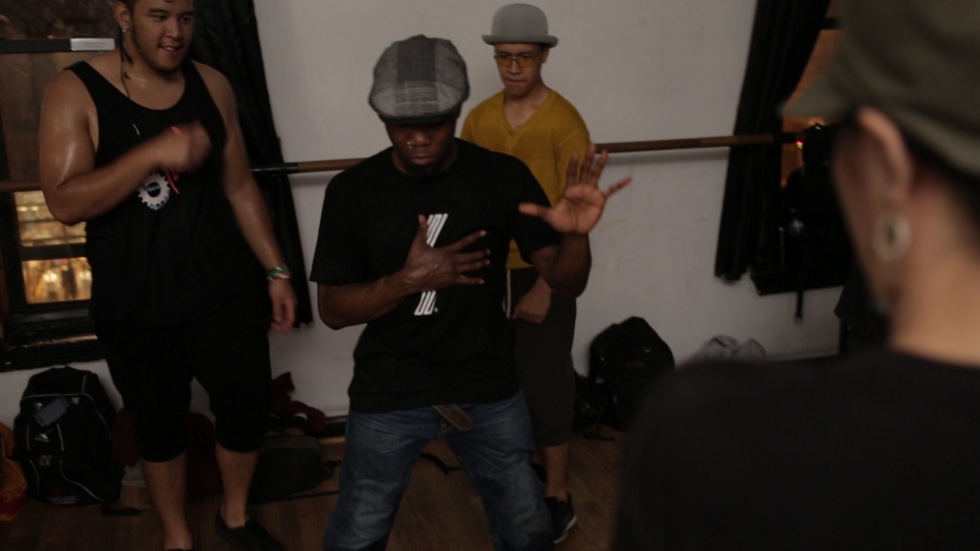
What do you make of standing and staring in clubs?
C: You don’t wanna interfere with a good thing going on. I think as we started to see these things coming into play, we wanted to kick back. To try and get people to stop looking in the mirrors; try and get people to dance with each other; try and stop messing with the natural ebb and flow of everything. If you get to the point where you’re only going out to look, you’re taking up space to me, man. Space is so limited and our clubs are shrinking! At the wrong joint if you’ve got groups of people literally standing, there could be a physical alteration. If you don’t move…
You’re getting moved?
C: Yeah, like, “yo you gotta move the fuck away, we’re trying to dance.” Most of the fights happen in house clubs around vacation time when people are out of school, and they’re not hip to the unsaid code of what’s happening. Don’t go in the circle, don’t cross the circle, it’s for experienced dancers, know what I mean?
E: [Imitates drunk collegiate] “We’re having such a good time!”
C: I’ve seen friction boil over. Heads get bashed in the bathroom, people get drop-kicked in the chest.
Do you not think that runs against the whole ‘house music is love’ thing?
C: I don’t think that house music is love as much as house music is release. A lot of the best street dancers – I’m talking popping, locking, breaking – are straight-up killers, man. The dance is not stopping them from doing what they do. The dance is a release of that life. It slows up the gunshots. There’s a lot of dancers who have died because of that other end of the lifestyle – you would never believe it because the way they dance is so beautiful. It’s an extreme freedom and love; on the other end it’s like fire and brimstone, man.
That’s why I say there’s a code. At its height [in the 90s], certain circles were comprised of dancers from a certain neighbourhood, and you couldn’t so much as watch. It would be black and white: “Yo, I don’t know you homie.” You either clock the expression as a warning and you go, or you make the mistake of coming back all friendly like, “easy dude.” The next thing you know: boom, someone’s flying across the floor or getting punched in the face. People think male dancers are soft, but some of these dudes are the most deadliest you can imagine. The club is a sacred space.
“We gotta get people partying again.”
Would you say The Lab is vital in not just perpetuating house dance culture, but acting as that kind of release valve too?
C: Of course, man.
E: The name ‘Lab’ makes so much sense to me, because it’s a place for experimenting. There’s an eternal amount of freedom to try things and see what happens; to learn and evolve the dance – that’s the most exciting part of the art. House music is our core style of music, but all the dancers there are different people; a melting pot of cultures.
I feel the hot place for dancers now is sessions. I mean, in the club if the DJ is hot and the people who came to dance are hot then that will be a good time. It used to be a regular, every night thing in NY. But it’s rare now – when that happens in a club, it’s special, you know? You’ll hear it in the video. The Lab is the hotspot.
So there’s been a dispersal in house music? The DJs and the dancers: they aren’t always as one anymore.
C: I don’t think a lot of people know about the dynamic of clubs back in the day. You had your NASA party kids dressed as angels or in spacesuits; dudes in business suits, chilling with their drinks; your house dancers. We all partied together, and that’s what made it better. Now that’s gone. They were closing down our spots left and right – everything got small, little lounges and stuff. If there was a big room, the techy music got it.
A new generation of dancers are surfacing again, but they are inaugurated at the sessions and so they don’t even know how to act in a club. We did The Lab because there were no parties – now there’s a party damn nearly everyday, but nobody’s going! Numbers aren’t consistent and promoters are hesitant, thinking about bar spend. I get that. My thing is this: if we can pack the small dancefloors, we can get the big dancefloors. People are trying to do stuff for us. I was saying this to Eriko earlier: we gotta get people partying again.
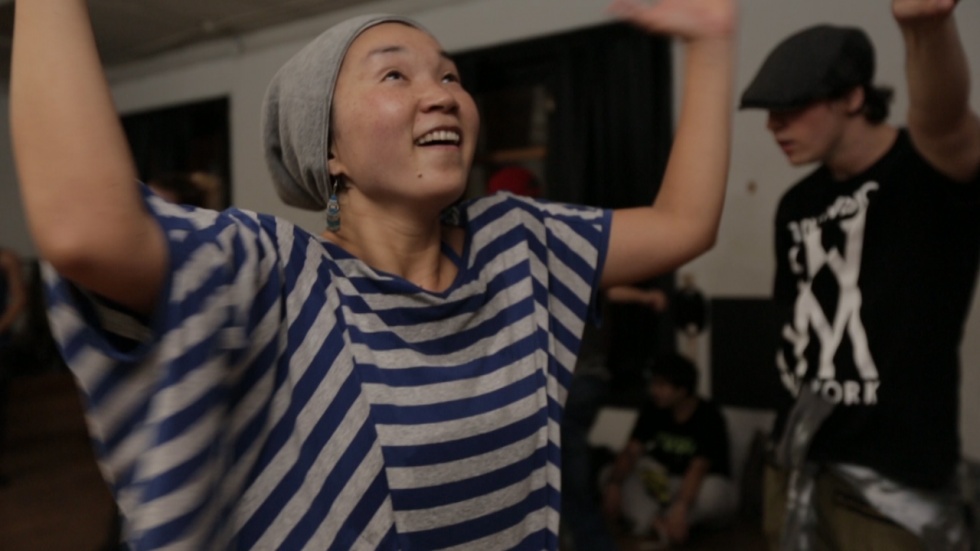
• • •
Given Eamon and Justin’s status as cultural historians as much as label curators, conscientious promoters and all-round music encyclopaedias, the final word on the New York club scene’s fluidity and fracturing should rest with them.
“A more rich culture of dancing existed before the Giuliani regime.”
EH: It seems like one of the reasons that this movement and art form became much more marginalised was Giuliani going hard on all the clubs like Vinyl, shutting them down. He used the Cabaret Law as a way of doing that so that in many ways led to a quashing of expression by a mayor of New York.
JC: Giuliani actually had an arsenal of weapons that he could use in going after these clubs. People talk about the Cabaret Law as the thing, but Giuliani used many different tools to go in and get rid of the things that he considered a nuisance. Club Vinyl was a victim of even more duplicitous tactics. That includes planting an underage officer amongst a crowd of thousands and finding the one guy who forgets to ask for an ID before he serves a beer. Vinyl lost its liquor license in the end, which I’m sure made it incredibly hard for them to function as a business. In the end, it got turned into condos.
EH: Right. The point is that a more rich culture of dancing existed before the Giuliani regime. Neither Bloomberg nor de Blasio have enforced it after that shakedown; but it’s near enough in the memory that it’s still on everyone’s minds. It’s still in the conversation.
If you take that freedom of expression – very nearly snuffed out – as central to New York dance culture, how would you assess where it stands in 2015?
EH: The clubs that are opening and operating now don’t create the optimal conditions for real dancers to dance. I feel as if the dance crew thing is about community, and that community tends to grow around regular parties with a regular DJ, as opposed to a constantly rotating cast of DJs from out of town. Elements of more defined dance culture can be found in some club spaces in New York, but in some ways, it’s primarily functioning within spaces like The Lab’s.
JC: While I do think things are getting better, even now there are very few places where you go that are truly optimal for dancers to dance: a space where dancers can show up, know they’ve got a nice dedicated space, a wooden floor and a reciprocal understanding with the DJ. Some of the dancers we spoke to were listing off the places they go, and they say ‘oh we can go every night’, but they’re all really small places. 100-person venues on a Monday or Tuesday night.
“The New York scene doesn’t work in the same way anymore. That’s not necessarily a good or bad thing – it’s just different.”
• Mister Saturday Night Episode 001 can be found over HERE – keep eyes peeled throughout August, 002 will be arriving imminently. •
